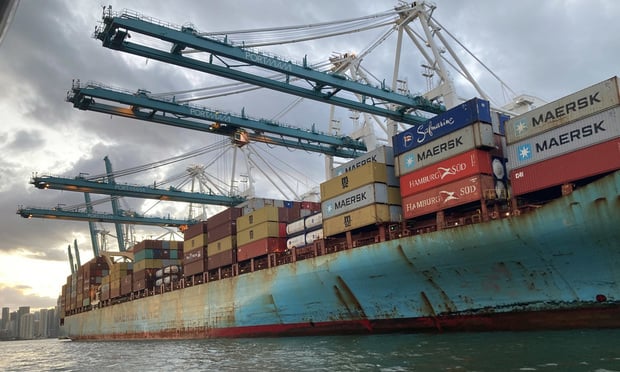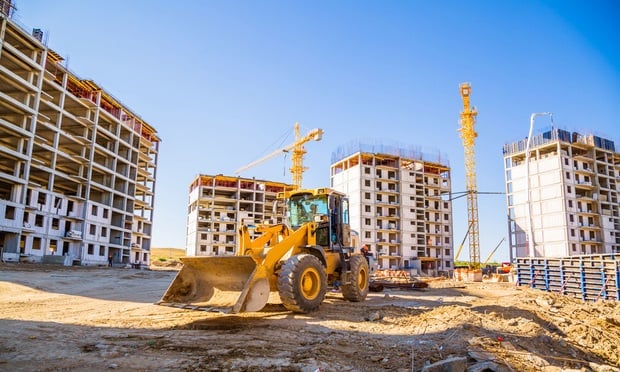[IMGCAP(1)]
SAN DIEGO—The boom in multifamily and commercial real estate has spurred developers to adaptively reuse aging facilities and convert them into striking residential and mixed-use communities, Lorne Polger, senior managing director and co-founder of Pathfinder Partners, tells GlobeSt.com. Pathfinder has transformed a century-old church in Seattle into contemporary townhomes and is in the process of converting portions of a former Butterball turkey-processing plant in Longmont, CO, into a mixed-use project with multifamily, creative office, brewery, restaurant and other commercial space. Also, in October, Pathfinder acquired the former Gold Star Sausage Factory in Downtown Denver's RiNo (River North) district and has already begun work to adapt the 65-year-old, 47,000-square-foot structure for use as creative office and retail. We spoke exclusively with Polger about the factors his firm looks for when investing in older properties for reuse, and how a community's history can ultimately contribute to its revitalization and success.
GlobeSt.com: How do you define adaptive reuse?
Polger: Adaptive reuse, a key factor in land conservation and the reduction of urban sprawl,
is the process of reusing a vacant or underused building for a purpose other than which it was originally built or designed; most common are the reuse of functionally obsolescent office and industrial properties. Adaptive reuse has existed for decades, but in earlier years was often undertaken without regard for a building's history. Recently, the focus has been on preserving original, historic or other interesting elements of a structure.
[IMGCAP(2)]
GlobeSt.com: Is adaptive reuse on the rise?
Polger: According to recent data, 90% of this country's construction activity over the next decade will be on existing buildings. With the recent surge in urban living, reuse of old buildings—especially in downtown areas—is especially popular. Thoughtful, well-done adaptive reuse can reenergize an aging urban core, boosting property values and infusing appeal into previously deteriorating and neglected areas. In areas where there is a surplus of office space and a shortage of housing, we expect to see obsolete office buildings adapted for use as multifamily residential projects.
GlobeSt.com: Which types of projects lend themselves best to adaptive reuse?
Polger: Properties whose past use is now obsolete but which can be converted to serve a new function are good candidates for adaptive reuse. Examples include warehouses, schools, churches, factories and office buildings. Many of these types of buildings have reinforced walls and columns, flat roofs, wide-open floor plans and expansive windows and are ideal for repurposing into apartments, condominiums, lofts, creative offices and mixed-use projects.
[IMGCAP(1)]
[IMGCAP(2)]
GlobeSt.com: What does Pathfinder look at when investing in a property for adaptive reuse?
Polger: Again, properties that are particularly interesting are poorly maintained or abandoned facilities—such as factories, industrial plants and warehouses—whose function is now obsolete. Years ago, it made sense to have factories in downtown areas, but today not so much; so, factories and other industrial projects are prime for redevelopment.
We concentrate on multifamily and residential opportunities in mid-tier cities in the west—places like Denver, Phoenix, San Diego, Portland and Seattle. These metro areas have experienced and are projected to continue to experience strong population growth and robust job growth, have local universities and a strong technology sector. They also have many cultural attractions and recreational activities that especially appeal to Millennials and other population segments.
In addition to the factors outlined above, we like markets with strong demand drivers that are also supply-constrained—communities with limited land or impediments to entitling land. Obsolete schools, factories and churches that are well located in infill areas are compelling candidates for adaptive reuse for multifamily and residential projects.
GlobeSt.com: Can you touch on some of Pathfinder's adaptive reuse projects?
Polger: One project we are particularly proud of is the Sanctuary, a century-old church in Seattle's tony Capitol Hill neighborhood that we helped convert into a contemporary multifamily community. While its 12 townhomes are modern in design, the project celebrates the architectural significance of the original 1906 church, with many elements of the original interior design such as the stunning stained-glass dome, now the building's atrium.
Last year, we acquired Butterball Turkey's former processing plant—seven parcels of land on 27.5 acres with 326,000 square feet of building space—in downtown Longmont, CO, northwest of Denver in Boulder County. The facility, which closed its doors in 2011 after the company was sold by ConAgra and processing outsourced to North Carolina, will be redeveloped in multiple phases, including multifamily, commercial and retail uses. The property is adjacent to a large park and across the street from a metro bus terminal, which may be expanded to a light rail stop in the next several years. We are big believers in transit-oriented redevelopment as part of adaptive reuse.
GlobeSt.com: Please describe the latest deal in Denver and why it was attractive.
Polger: The former Gold Star Sausage factory is located in downtown Denver's gentrifying River North (RiNo) neighborhood. The property is a one-story brick building with 25-foot bow-truss ceiling heights, within walking distance to a soon-to-open commuter rail station. The neighborhood is dynamic with an influx of new businesses and residents. We plan to redevelop the building with a large outdoor plaza in the old truck bay, as well as common meeting space and a bike barn. The building's brickwork and arched, bow-truss ceilings will be emphasized in the renovation. We've already signed our first lease with an Italian furniture retailer and are receiving interest from architectural/design firms, gyms and restaurants.
GlobeSt.com: What are the challenges of adaptive reuse?
Polger: It's important to start with a vision for the property and to identify a neighborhood with a strong need for what's being developed. Depending on the nature of the property and the intended use, there may be design and construction challenges as well as entitlement, zoning, environmental or financing considerations. Oftentimes, estimating construction costs and feasibility during diligence is challenging because you don't know what is behind the walls (structurally and environmentally). Careful due diligence is key.
With adaptive-reuse projects, developers often keep a significant portion of the existing exterior façade, predominately making changes to interiors. Frequently, such proposed changes may unhinge preservationists—which can present hurdles, along with issues related to landmark status.
GlobeSt.com: Discuss the positives of adaptive reuse.
Polger: A community's history is often the catalyst for its revitalization. Adaptive reuse can be an ideal option for aging buildings, especially in overcrowded urban areas. It can spark reinvestment in established areas, support local business, boost employment, generate tax revenue and support sustainability by using existing or reclaimed building materials. A single, well-thought-out adaptive-reuse project can be a catalyst for gentrification of an entire neighborhood and can spare a landmark project from the wrecking ball. For developers/investors, there may also be financing incentives and tax credits.
Want to continue reading?
Become a Free ALM Digital Reader.
Once you are an ALM Digital Member, you’ll receive:
- Breaking commercial real estate news and analysis, on-site and via our newsletters and custom alerts
- Educational webcasts, white papers, and ebooks from industry thought leaders
- Critical coverage of the property casualty insurance and financial advisory markets on our other ALM sites, PropertyCasualty360 and ThinkAdvisor
Already have an account? Sign In Now
*May exclude premium content© 2025 ALM Global, LLC, All Rights Reserved. Request academic re-use from www.copyright.com. All other uses, submit a request to [email protected]. For more information visit Asset & Logo Licensing.








